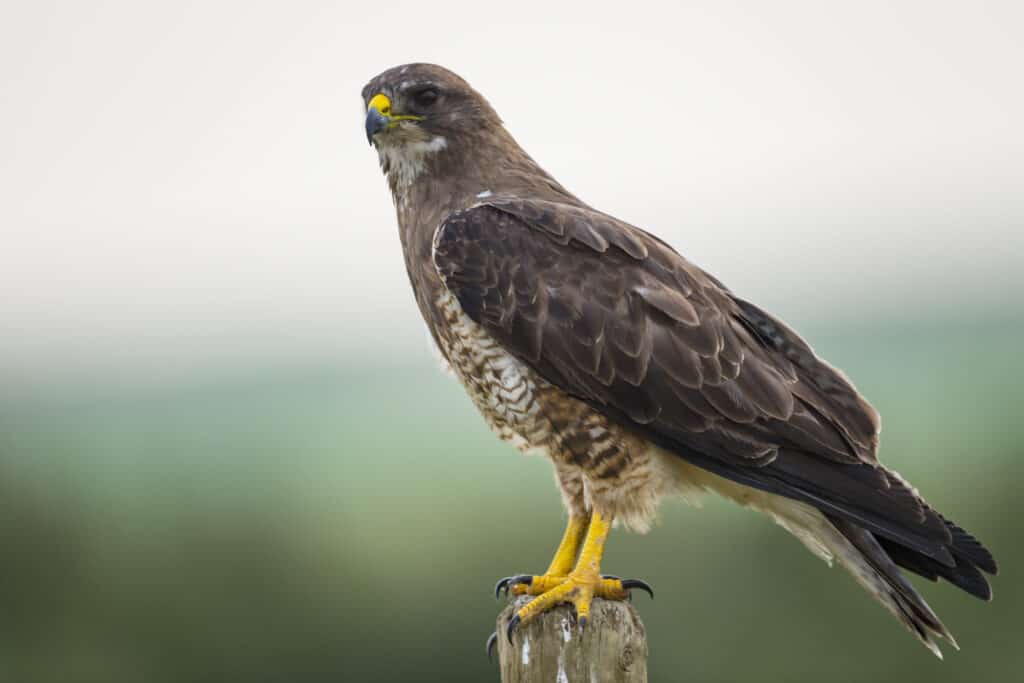When you think of hawks, you probably don’t think of large groups like you would with starlings or pigeons. Typically, when hawks do gather, it’s usually in pairs, maybe three or four at the most. However, sometimes, when the circumstances are right, many more hawks can come together to form large groups. But what exactly is a large group of hawks called?
Keep reading to find out!
Not Always a Flock: Hawk Kettles
A group of hawks is known as a “kettle.” It may also be known as a “pot” or a “cast.”
Comparing a group of amazing aerial hunters to a cooking device can seem quite silly. However, these terms originate from the fact that a group of hawks can look quite similar to ingredients boiling in a kettle. This is because when you see large groups of hawks together, it’s typically because they’ve found air currents known as thermals. Thermals are warm winds that blow upwards, allowing birds to fly without needing to waste a large amount of energy constantly flapping.
Because of this, seeing a group of hawks can be a bit rare. They tend to take advantage of thermals most when it comes time for migration. Because some species of hawks can travel thousands of miles during migration, thermals provide a well-needed break without sacrificing distance. Not only are thermals more alluring at this time, but it’s also more common to see hawks come together during migration overall, as many tend to seek nesting grounds in the same places.

If hawks fly together in a group, they are called a kettle.
©aDam Wildlife/Shutterstock.com
How Many Hawks Fly in a Kettle?
A kettle is just any group of hawks. Usually, this doesn’t include pairs; however, which are common during their breeding season. Instead, kettles usually describe a group of hawks numbering three or more. During migration, kettles can easily grow to include thousands of individual hawks! This is especially true for certain species, such as the broad-winged hawk.
Overall, the term kettle is usually reserved for describing a group of hawks numbering over a dozen. This helps distinguish common group sightings, such as a mating pair and their offspring, from actual, significant groups of unrelated hawks.

Any group of hawks of any number more significant than a pair is a kettle.
©MPIX.TURE/Shutterstock.com
Do All Hawks Form Kettles?
Now that you know more about what a group of hawks is called and how many individuals typically make up a kettle, you’re probably wondering about which types of hawks form kettles. Certain species are more likely to form kettles than others. This is because certain types of hawks will migrate more frequently than some species, while others that do migrate have different routes.
Some of the most common hawk species to form kettles are Swainson’s hawks and broad-winged hawks. You’ll often see them mingling with other species as well.
One of the most important things to remember about hawks and kettles is that they’re not working together. As a result, many species of birds can function in a non-territorial or non-aggressive way, even species that typically behave in this manner. This is because each individual in a kettle is just that: an individual. The only cooperation they’re willing to have during this period is by sharing the air and not being territorial or aggressive when riding the thermals together.

The Swainson’s hawk is one of the more common species of hawk you’ll see as part of a kettle.
©BGSmith/Shutterstock.com
Do Hawks Flock With Other Species?
As you learned above, a group of hawks is called a kettle. However, do groups of hawks sometimes include other species? The answer is yes!
During migration, it’s common to see large birds gathering together in groups, not just one species of hawk. This means that you are likely to see different species of hawks and other birds altogether, such as turkey vultures, riding the thermals.
The photo featured at the top of this post is © Kjersti Joergensen/Shutterstock.com
Thank you for reading! Have some feedback for us? Contact the AZ Animals editorial team.






